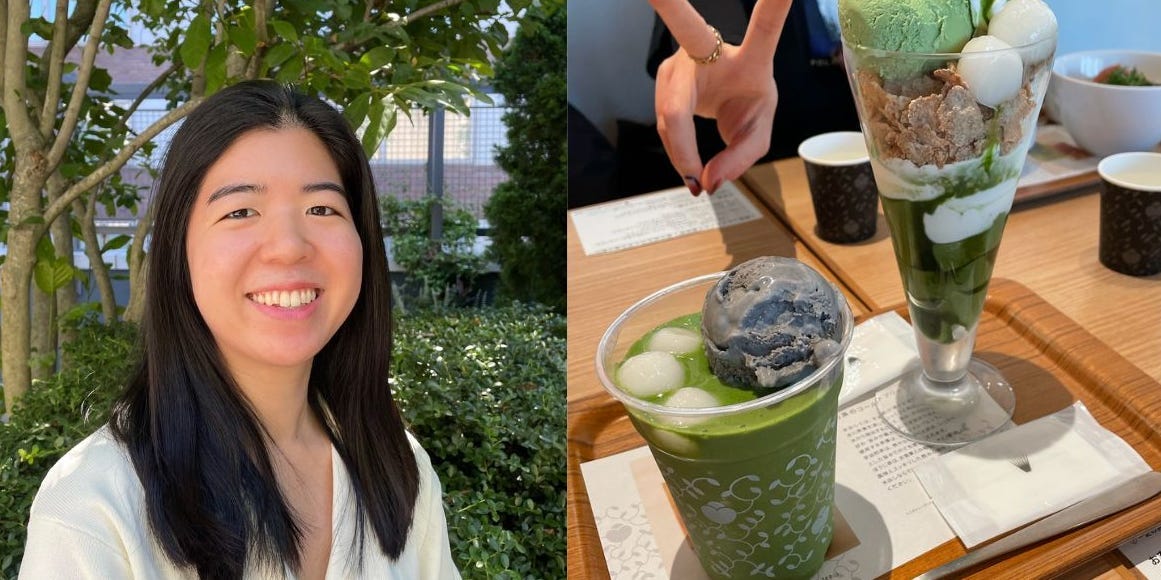[ad_1]
- Kaki Okumura is a Japanese wellness writer and illustrator who lived in the US until she was 12.
- Okumura struggled with being overweight and tried numerous dieting tactics, but none of them worked.
- Her book “Wa: The Art of Balance” will be released in March and focuses on 4 Japanese practices that helped her.
This as-told-to essay is based on a conversation with Kaki Okumura, the author of “Wa: The Art of Balance,” a book set to be published on March 14. It’s been edited for length and clarity.
I remember looking down at the family photo and feeling my heart sink. I couldn’t help it. I was clearly the only one who was overweight.
I’m Japanese, but having been raised in the US until I was 12, I had found myself facing a health challenge that a lot of other Americans face: being overweight.
If my family had shared this trouble with me, I may not have felt so alone in my journey.
But my family just didn’t struggle in the way I did, perhaps because most of them lived in Japan — a country that is a leader in longevity and has very low rates of obesity.
My parents were kind and never shamed me for my body, but I still couldn’t help but feel an intense amount of pressure to change the way I looked. So I embarked on a number of dieting tactics — I tried everything from calorie restriction and intermittent fasting to low-carb. Some worked, with varying levels of success, but none were sustainable.
At least, not until I moved to Japan.
I always had an image in my mind that people in Japan ate very healthfully — that they didn’t eat fried foods, meat, or ice cream — and most of their meals were composed of rice, fish, and steamed vegetables.
But after living there, I started to realize that Japan is just like any other developed country: they have snacks, they have fast food, and they certainly indulge in sweets. It was clear that Japanese people enjoyed these foods regularly too.
So what’s the secret? It’s in balance.
Since following these 4 principles, I have never struggled or worried about the way I ate.
1. Moderation
One of the first things that people who visit Japan will say about the food is how small the portions are. When you go out to eat in Japan, you’ll probably be able to finish it in one sitting, while in the US you’re probably going to want a takeout box.
But these moderate portions are one of the key reasons why people in Japan often eat whatever they want — and many without rigorous exercise routines. When you eat in moderation, nothing has to be off-limits, and you can relax about eating cake at birthdays or steak to celebrate a job promotion. Consequently, we feel less stressed about food.
I came to realize that sustainable healthy eating is not about willpower or self-discipline, but it’s about being able to incorporate the foods we love, in moderation.
2. Variety
When you go to a Japanese restaurant in Japan, you often come across a meal set composed of rice, miso soup, a protein dish, and a few vegetable side dishes. The dishes can range from grilled fish and steamed spinach, to deep-fried chicken and a salad.
The key point is not so much the actual dish itself, but that there is such a wide variety of dishes in one meal. This way, people can easily get a variety of nutrients without having too much of any one thing.
We need carbohydrates, fats, fiber, and protein, but instead of having to overthink how to incorporate them together, the Japanese style embeds balance into each meal by having various mini dishes.
The variety also keeps meals interesting, so you don’t feel restricted or deprived of anything, while still eating everything your body requires.
3. Simplicity
I’ve found that vegetables are often treated as a necessary evil in the US. There is no shortage of recipes and articles that are worded like “How to make vegetables taste good” or “Vegetable dishes you’ll actually want to eat.”
With the assumption that vegetables don’t taste good, we end up with recipes that will do anything to mask the flavor — often with heavy amounts of salt, oil, or sugar.
Contrary to that, in Japan, the narrative around vegetables is the opposite: that they are delicious.
It’s common for vegetable dishes to be seasoned lightly, often steamed or even raw, like the shredded cabbage that often comes with tonkatsu, Japanese pork cutlet.
Popular Japanese movies, for example Ghibli’s “My Neighbor Totoro”, have entire scenes of children eating plain, fresh, vegetables with delight.
Once I started recognizing that the ingredients we use to cook are delicious, I started focusing on how to enhance and complement these flavors rather than mask them.
Sometimes, the most important ingredient is the one you leave out.
4. Self-compassion
This was the most difficult principle for me to adopt, but it was the most important.
When I would overeat, I would end up feeling bad about myself. Occasionally I might feel guilty, ashamed, or weak-willed.
An idea that helped me during moments like this was the Japanese phrase “kuchisabishii.” It’s a commonly used phrase that directly translates to “lonely mouth,” but it refers to boredom snacking, or when we eat without intention.
But kuchisabishii is less critical in nature than phrases like binge-eating, or compulsive overeating, because it recognizes that like loneliness, eating out of boredom is a very natural emotion.
Instead of sitting in guilt and shame, by shaping experiences in which we may have eaten a bit too much as a forgiving experience, we can recognize and move on with kindness.
Living in Japan has shown me that healthy eating is less about self-discipline or willpower, which are not helpful in building lifelong habits, but it’s more importantly about finding a balance. Food is not just fuel, but it can be central to our culture, traditions, identity, and values.
I’ll be publishing a book in March of this year, called “Wa: The Art of Balance.” “Wa” — the Japanese word used to describe Japanese things — also means harmony, and represents the value of seeking balance to live a well-rounded life.
NOW WATCH: Popular Videos from Insider Inc.
Loading…
[ad_2]
Source link



